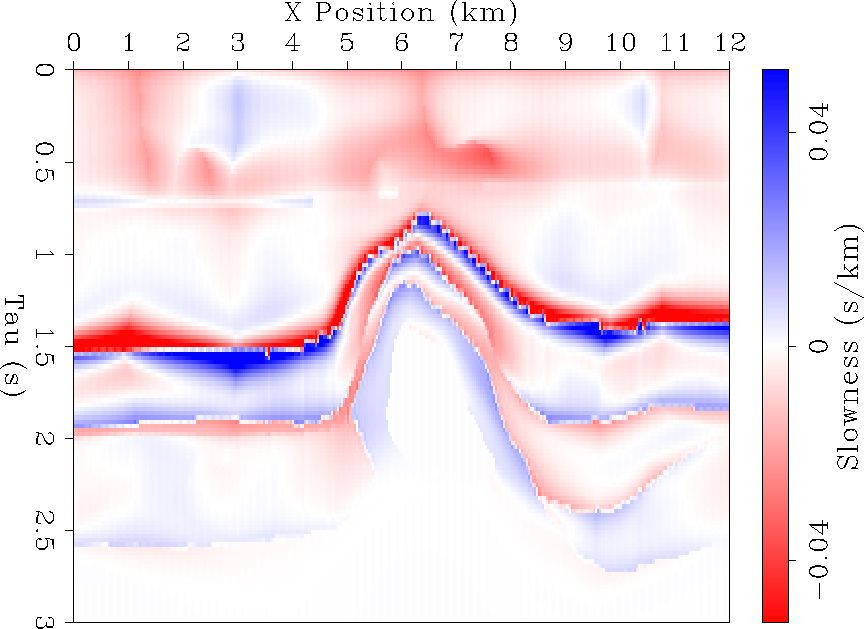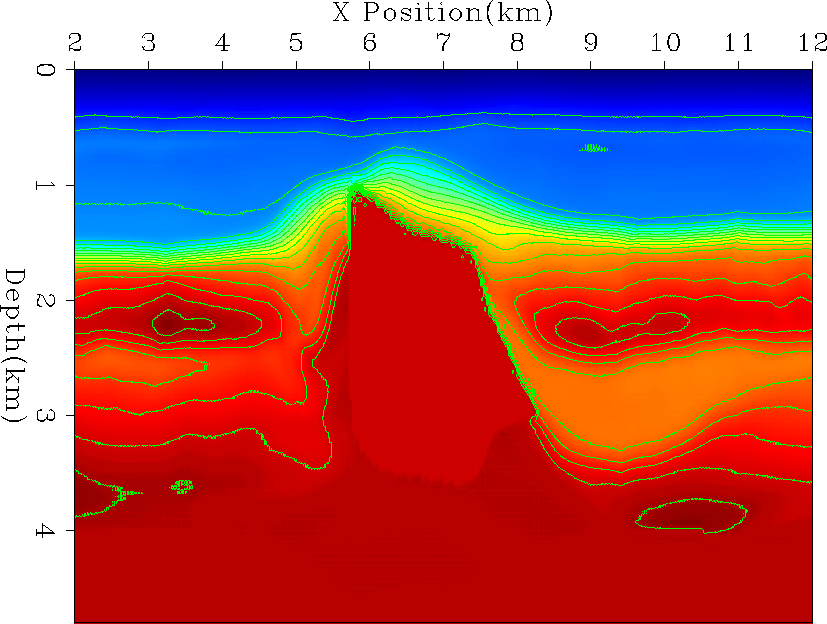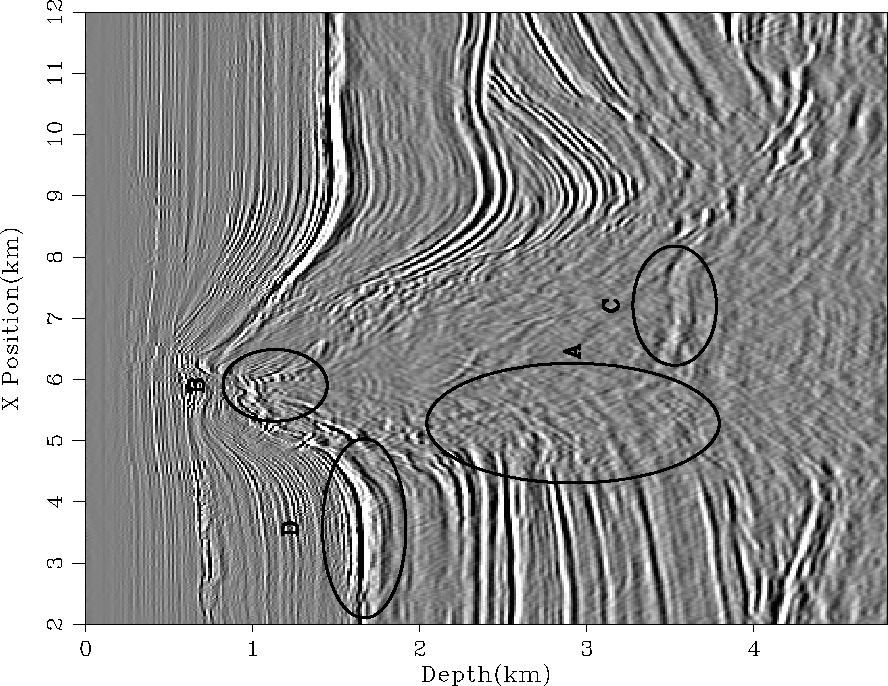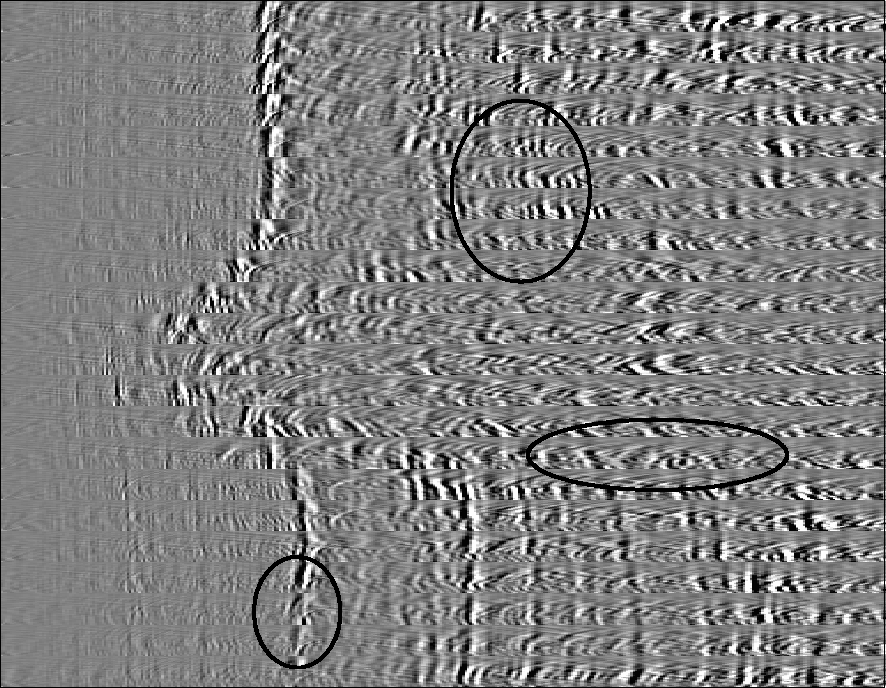|
change1
Figure 8 Change in slowness introduced in iteration one. |  |
Using fitting goals (1) I estimated a new velocity model. Figure 8 shows the slowness perturbations introduced to the model. Note how the changes generally follow structure. If we add these slowness changes to the initial slowness model and convert back into depth we get Figure 9. Our updated velocity model is smoother than the initial model (Figure 2). The chalk layer velocity has been increased and the sediment velocity along the lower left flank of the salt has been increased.
|
change1
Figure 8 Change in slowness introduced in iteration one. |  |
|
vel1
Figure 9 Velocity model after first iteration. |  |
![[*]](http://sepwww.stanford.edu/latex2html/movie.gif)
If we migrate using the updated velocity model, we obtain Figure 10. Overall the migrated image is improved. Comparing the new migration (Figure 10) to the initial migration result (Figure 3) we see that the chalk (`D') and salt top reflections (`B') are sharper. The sediments in the upper left portion of the salt flank are more coherent. We are beginning to see reflections along the lower left flank where few coherent events were present in the initial image (`A'). The right side of the salt shows similar improvement. The focusing of the upper events is improved and we are seeing significantly more of the sediment-salt contact than was possible in the initial migration. The lower portion of the image has also improved. The salt bottom reflection is more coherent (`C') and we are seeing a greater extent of the reflector in the lower left portion of the image.
 |
![[*]](http://sepwww.stanford.edu/latex2html/movie.gif)
The CRP gathers (Figure 11) tell a similar story. The CRPs are flatter, and much more believable. The moveout errors have been decreased and we are now able to see more coherent events than were initially possible.
 |
![[*]](http://sepwww.stanford.edu/latex2html/movie.gif)